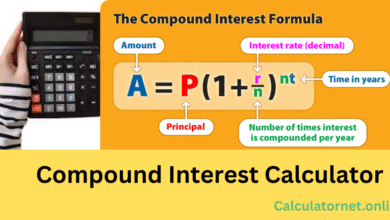Investment Calculator
Contents
- 1 💰 Investment Calculator
- 1.1 Calculate Your Financial Future
- 1.1.1 Year-by-Year Growth
- 1.1.2 Support the Developer!
- 1.1.3 The Investment Calculator: Your Guide to Smarter Investing
- 1.1.4 What Makes Up an Investment?
- 1.1.5 Different Types of Investments and How a Calculator Can Help
- 1.1.6 FAQs About the Investment Calculator
- 1.1.6.1 How do I use an investment calculator effectively?
- 1.1.6.2 What are the main variables of an investment?
- 1.1.6.3 Can this calculator predict my exact investment returns?
- 1.1.6.4 Why is the investment length important?
- 1.1.6.5 What is compounding and why does it matter?
- 1.1.6.6 Is a calculator only for long-term investments?
- 1.1.6.7 How do I choose the right return rate for my calculation?
- 1.1.7 Conclusion
- 1.1 Calculate Your Financial Future
Investment Calculator

💰 Investment Calculator
Calculate Your Financial Future
Initial Investment
Total Contributions
Total Interest Earned
Final Balance
Year-by-Year Growth
| Year | Starting Balance | Contributions | Interest Earned | Ending Balance |
|---|
Support the Developer!
If this tool was helpful, consider a small donation to support future development and maintenance. Thank you!
The Investment Calculator: Your Guide to Smarter Investing
Investing is a powerful way to make your money work for you, but it can feel complex and intimidating. Understanding the potential outcomes of your financial decisions is crucial for building wealth. Whether you’re a seasoned investor or just starting out, a tool like an investment calculator can demystify the process and help you visualize your financial future. This blog post will break down the key variables of investing and explore how different types of investments can be analyzed using a calculator, so you can make more informed decisions.
What Makes Up an Investment?
Every investment, no matter how simple or complex, is built on a few core variables. Understanding these components is the first step to using an investment calculator effectively.
- Starting Amount (Principal): This is the initial capital you invest. It could be a lump sum saved over time, an inheritance, or the first payment on a new asset.
- End Amount: This is your target—the total value you hope to achieve by the end of your investment period.
- Investment Length: The duration of your investment. Generally, a longer timeframe allows for more compounding, which can significantly increase your returns.
- Return Rate: This is the percentage gain or loss on your investment over a period. It’s the key metric used to compare the performance of different investment options.
- Additional Contribution: Any extra money you add to your investment over time, often called an annuity payment. Consistent contributions can dramatically boost your final balance.
Different Types of Investments and How a Calculator Can Help
An investment calculator can be applied to a wide range of investment types. While the specifics of each asset may vary, the fundamental variables remain the same.
CDs and Bonds: The Foundation of Fixed Income
Certificates of Deposit (CDs) and bonds are considered low-risk investments. With a CD, you agree to leave your money in a bank for a set period in exchange for a fixed interest rate. Bonds, on the other hand, are loans to a government or corporation.
A calculator is perfect for these since the return rate is often fixed and the investment length is predetermined. You can quickly see how different starting amounts and additional contributions will grow over time, giving you a clear picture of your future earnings with minimal risk.
Stocks: Embracing the Market
Investing in stocks means buying a small piece of a company. While stocks don’t offer a fixed return, historical data and future forecasts can be used as the return rate in your calculations.
Using an investment calculator here can help you model different scenarios. For example, you can project how a diversified portfolio might perform over 20 years, assuming an average market return rate. This helps you set realistic expectations and understand the power of long-term compounding.
Real Estate and Commodities: Tangible Assets
Real estate and commodities like gold and oil are popular tangible investments. Their value is influenced by factors like market demand, economic conditions, and even global events.
For these, a calculator helps you model the impact of appreciation and additional costs. For instance, you can factor in rental income as an additional contribution to see how it accelerates your returns on a rental property. The calculator allows you to test various assumptions, such as different appreciation rates, to see what your investment might be worth in the future.
FAQs About the Investment Calculator
How do I use an investment calculator effectively?
To use an investment calculator effectively, gather accurate inputs for your specific investment. For example, find historical average returns for a particular stock or the fixed interest rate for a CD. The more realistic your inputs, the more valuable the output will be for your financial planning.
What are the main variables of an investment?
The main variables are the starting amount (principal), the end amount (your goal), the return rate, the investment length, and any additional contributions you plan to make. These five elements are the building blocks of most financial projections.
Can this calculator predict my exact investment returns?
No, an investment calculator cannot predict the future with 100% accuracy, especially for variable-rate investments like stocks. It’s a powerful tool for modeling scenarios and understanding potential outcomes, but results should always be viewed as estimates.
Why is the investment length important?
The length of your investment is critical because it determines how long your money has to grow and compound. A longer investment horizon allows you to ride out short-term market fluctuations and benefit significantly from the power of compounding interest.
What is compounding and why does it matter?
Compounding is the process of earning returns on both your initial investment and the accumulated returns from previous periods. Over time, this snowball effect can dramatically increase your total earnings. A calculator illustrates this growth clearly in its accumulation schedule.
Is a calculator only for long-term investments?
While calculators are great for long-term planning, they can also be used for short-term goals. For example, you can calculate the interest earned on a 12-month CD or project the return on a short-term bond.
How do I choose the right return rate for my calculation?
Choosing the right return rate depends on the investment type. For low-risk assets, use the stated fixed rate. For riskier investments, consider using historical averages or a conservative forecast. It’s often helpful to run multiple calculations using a range of return rates to see a best-case and worst-case scenario.
Conclusion
An investment calculator is more than just a tool for crunching numbers—it’s a way to take control of your financial future. By breaking down complex investment scenarios into manageable variables, it allows you to visualize potential growth and make smarter, data-driven decisions. While it can’t guarantee a specific outcome, it provides the clarity you need to set realistic goals and stay on track.
Ready to see your money grow? Use an investment calculator today to start planning your financial future.








